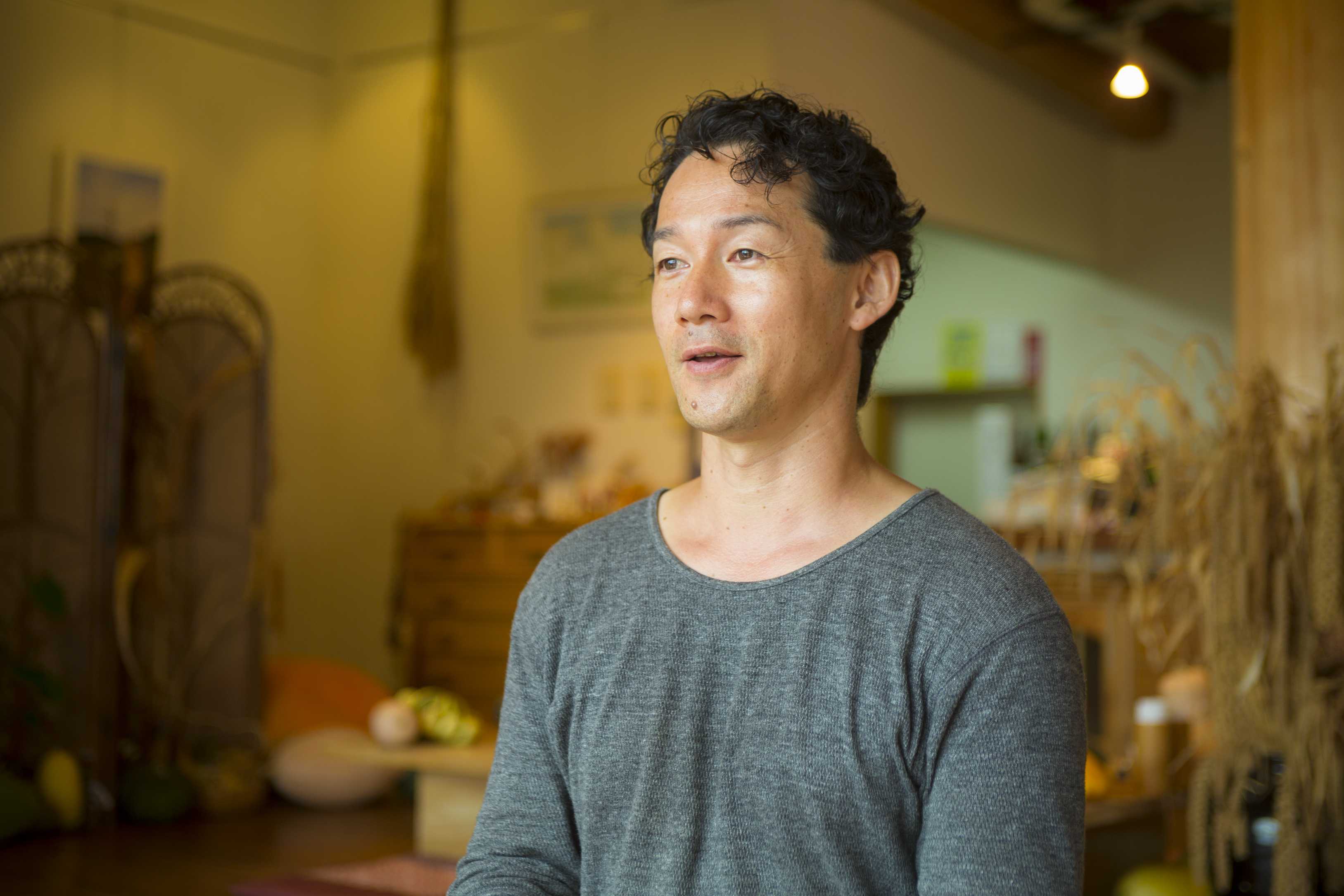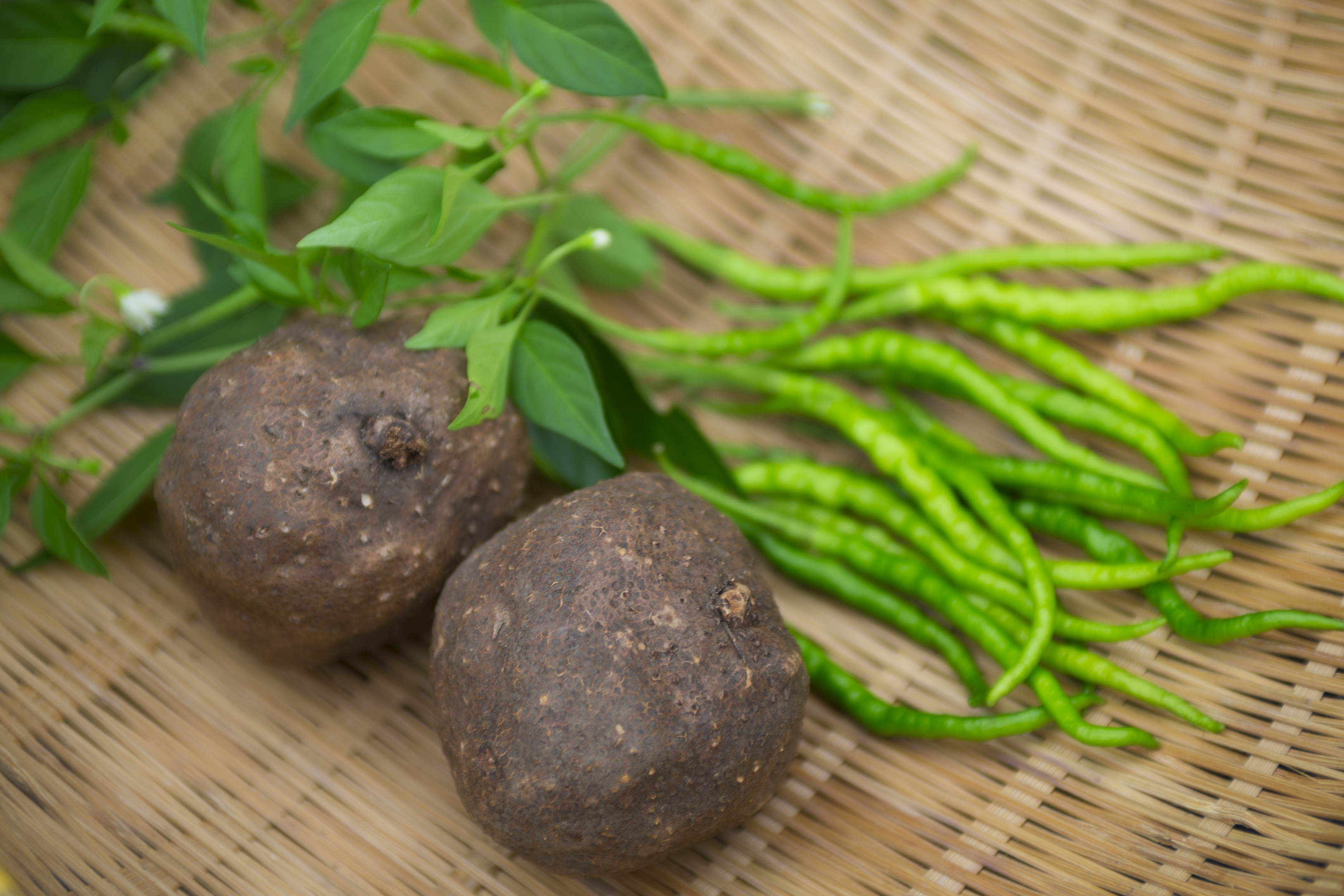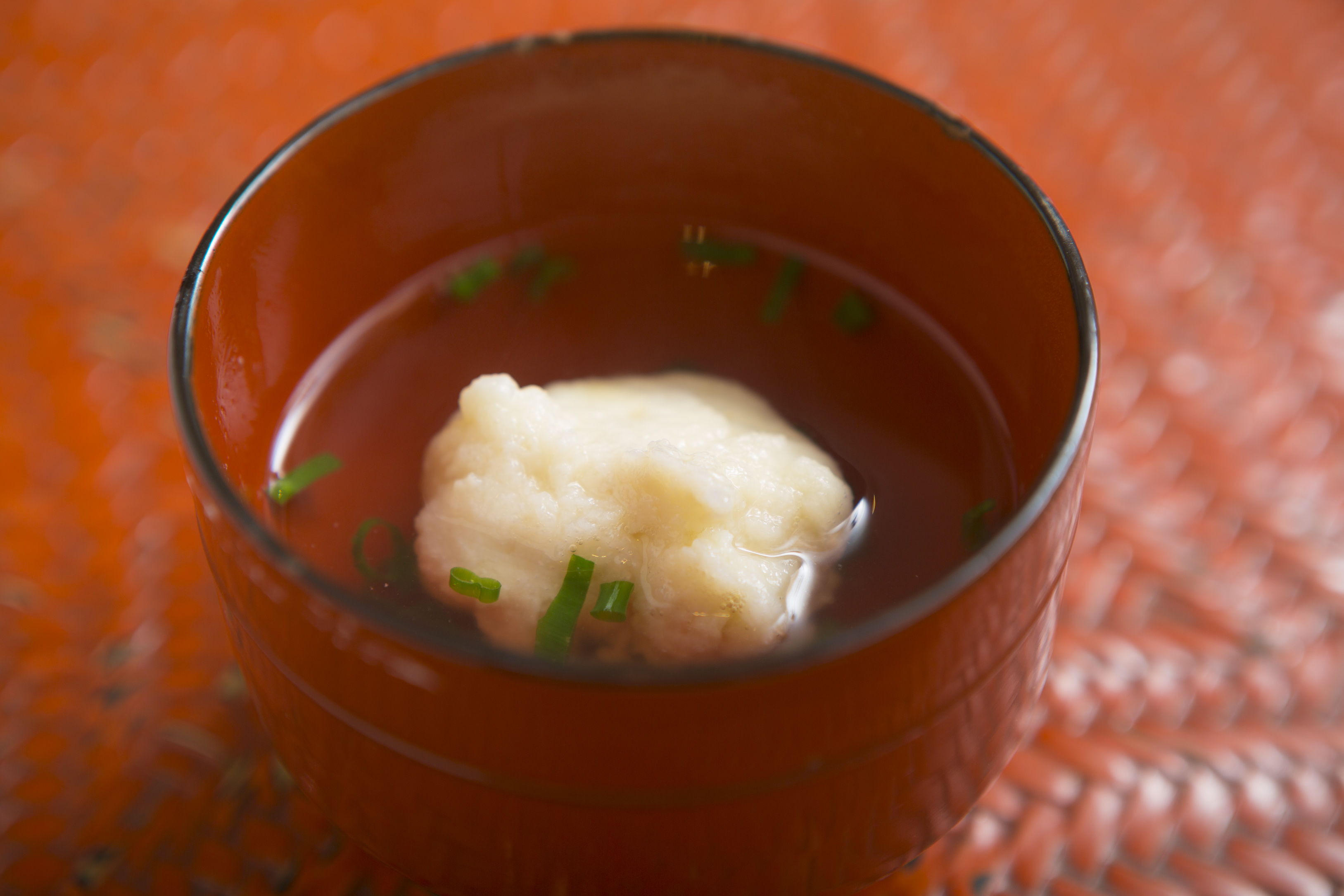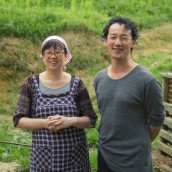Seichou no sato AWA
The Delicious and Graceful Cuisine of Yamato
text : Yudai Ozoe
photo : Kazunari Tamura
Learning of Nara’s cha gayu and kakino-ha zushi provided me with a glimpse into Nara’s gastronomic culture. I soon started to wonder what Nara’s locally-harvested crops were like. To find out, I visited a restaurant situated in a mountain village outside Nara City which serves dishes using traditional vegetables of Yamato (the old name for Nara).
Seichou-no sato is an area spread amongst the suburban hills and mountains. There is nestled a farm restaurant featuring Yamato traditional vegetables, and welcoming us with big smiles and a family of goats was Mr. and Mrs. Miura, Masayuki and Yoko. They are experts of vegetables and pioneers of agricultural communities. They showed me how Nara’s gastronomic culture was always cultivated through the existence of the local traditional vegetables.

“There are currently 19 varieties of certified ‘traditional Yamato vegetables’. Those are the ones that have particularly long history out of the 40-odd local Yamato types. They might not be as famous as the successfully branded Kyo-yasai (Kyoto vegetables), but Yamato vegetables are very distinct in their shapes, looks and deep, rich flavours and aromas. Many of them are so unique and rock’n’roll,” says Mr. Miura fondly.
For Mr. Miura, who nurtures various vegetables on his 360 square metres of farmland, each one of those uniquely different traditional vegetables is like a child that he can’t stop talking and smiling about.

“We say that traditional vegetables bring to our life ‘seven winds’, as the terms of all their benefits begin with the Chinese character meaning ‘wind’, pronounced as ’fu’ – Fu-do (climate), Fu-mi (flavor), Fu-kei (landscape), Fu-shu (custom), Fu-butu (local feature), Fu-zoku (local manners) and Fu-zei (taste). Research is advancing on the scientific side of traditional vegetables, of their nutritious values or constituents, but there have yet to be studies of those that bring the ’fu’s. The population of farming regions is aging, and there are fewer and fewer people left to narrate the stories of this rich culture. As such, we must nurture our storytelling instincts to pass on those traditions and local cultures to the next generation… You don’t find such fresh and tough-looking vegetables like these in supermarkets, right?”
Proudly Mr. Miura showed me those vegetables once again. He holds them in his arms, looking at them as if they are the apples of his eyes. The irregular shapes of the unique vegetables speak for themselves in terms of how they contain the energy of the land. Mr. Miura suggested I have a bite of a him-tougarashi (Fushimi sweet pepper) saying, “It’s not spicy at all.” In a single bite, the rich delicious flavor spread across my taste buds as the fresh aroma hit my nose. The seven winds of Yamato traditional vegetables indeed!

The capital moved to Nara back in 710 A.D. and was named Heijo-kyo. The local food traditions of this area go even further back, and ever since the local people have displayed a deep affection and gratitude towards the rich blessings bestowed upon them by their land. Over time, the wisdom and gifts of the ages have kept evolving. Nara’s kyoudo ryouri is ultimately simple, but never coarse. With the blessings of unique and distinctive vegetables, I would call Nara’s kyoudo ryouri a magnificent feast created by the land once called kuni no mahoroba (“splendid land of the nation”). The modest traditional food of Yamato seems to be the real beginning of washoku (Japanese food).

Mr. Masayuki Miura, Mrs. Yoko Miura
The owners of AWA Inc., Ltd., Mr. & Mrs. Miura, started conducting research into native crops in 1998 in the semi-mountainous area outside Nara City, Seiryou no sato, and started conserving those crops by cultivating them in the field. The restaurant they opened in 2002, featuring traditional Yamato vegetables, Seichou no Sato AWA, earned one star in the Michelin Guide 2012 (Kyoto/Osaka/Kobe/Nara). The couple also started a social business dubbed “Project AWA”, in cooperation with a local NPO, Seichou no mura (Seichou village), and Gokadani agricultural cooperative council. This initiative’s objective is to create a new community with local stakeholders, in which people of the primary sector people get involved in the secondary and tertiary sectors too.
Farm restaurant, known to be difficult to get a table at. 20 tables per day only.
You can use the restaurant for café purposes if after 2:30pm and there are seats available.
861 Takahi-cho, Nara City, Nara Prefecture.
TEL: +81-(0)742-50-1055
Open Hours: 11:45am-4pm (reservation only) Closed: irregularly.

